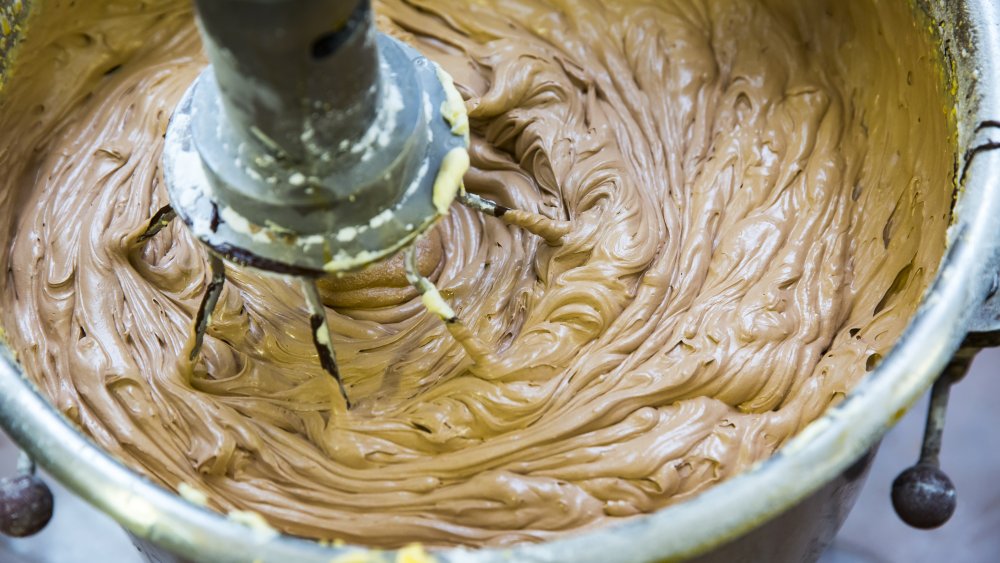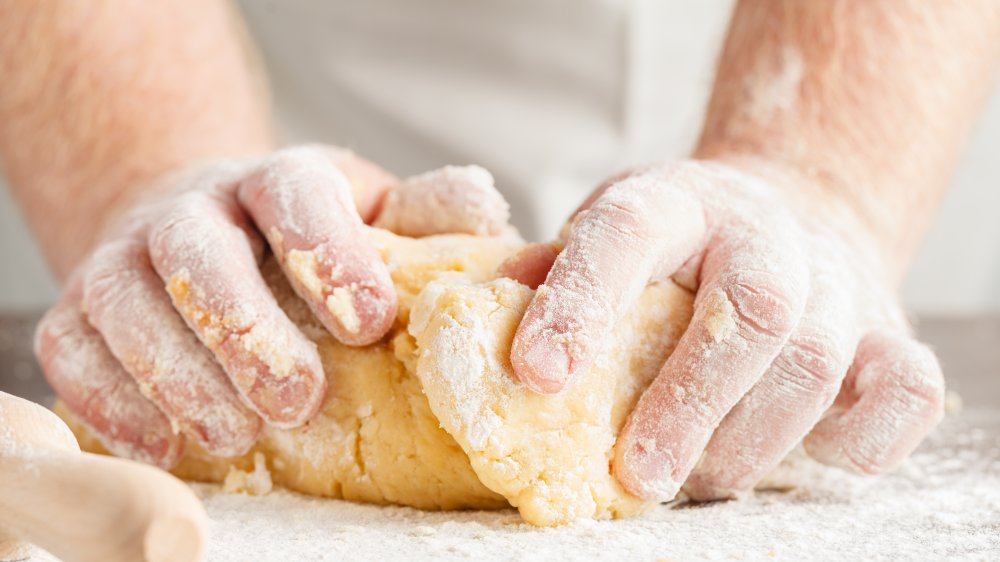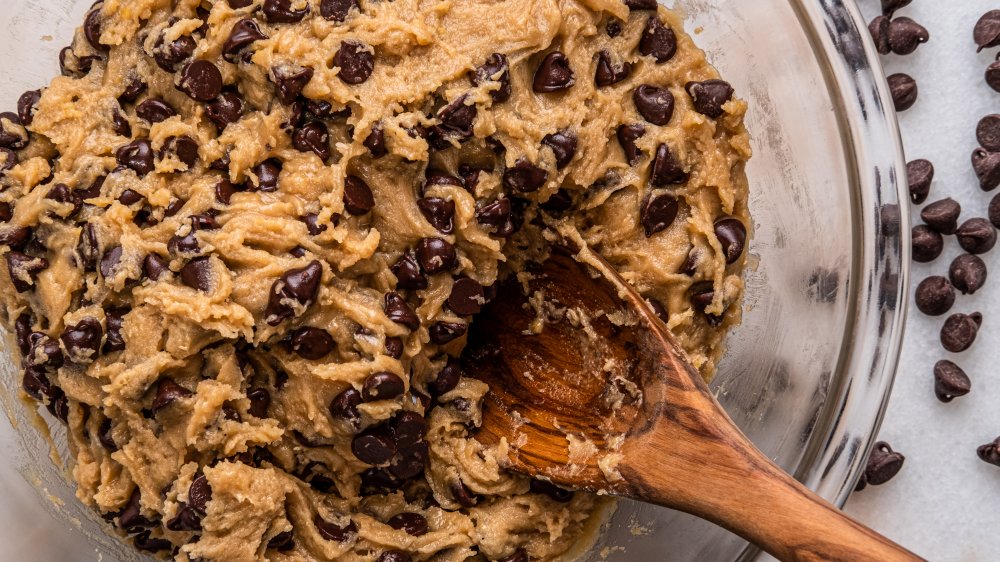What Happens When You Overmix Batter?
There are plenty of ways to mix batter, at least that's according to noted cookbook author Mark Bittman, which makes the overmixing issue an even more confusing one. In How to Bake Everything, Bittman lists five ways (via Food 52): stir (a basic mix); fold (making scoop-like movements with a spatula); beat (combining with a whisk or mixer until aerated); whip (how you bring egg whites and cream to soft or stiff peaks); and cream (combining soft fats and sugar — creaming helps lift cakes, cookies, and pastries).
What happens to overmixed batter depends entirely on what you're making. Bittman writes, "There are so many ways to combine ingredients, all of which can have as much of an effect on the final texture of the dish as the ingredients themselves; it's rarely a matter of simple addition."
And while sites like Cupcake Project says overmixing may be good for cookies, not great for cakes, and a complete no-no for pie crusts, Food 52 says overmixing can have a different effect on cookie dough, cake batter, egg whites, lean bread, and enriched bread.
What happens when you overmix?
Several things can happen when you overmix baked goods. Dough can get aerated, which means too much air can be incorporated into mixtures. Mixing goods for an extended period of time can also result in extra gluten development; which means that overmixing will give you cakes, cookies, muffins, pancakes, and breads which are gummy or unpleasantly chewy. Cakes can even react in two distinct ways — they can either become dense, or they can become so airy they are fragile.
Food 52 also identifies what it calls "the butter issue," where excess mixing turns butter pieces into warm, tiny shards that aren't much good for biscuits and dough, because butter for these baked goods needs to be cold and in bigger pieces. How a butter comes out of the mixing process will determine what kind of biscuit or pastry you end up getting.
How to avoid overmixing batter
Given all this, it's best to understand just what kind of mixing you recipe calls for. If you're not sure how much to mixing you need do to get your dough ready, just put everything together until the mix is uniform.
This means you'll need to stop mixing as soon as all the ingredients have been incorporated, or keep going until all the flour streaks have disappeared. If you're adding chocolate chips or fruit, stop before the small streaks disappear, since incorporating the add-ins mean you have to give your dough a few extra turns anyway (via Baking Bites).


